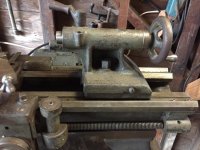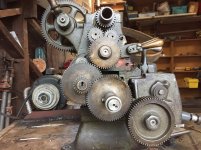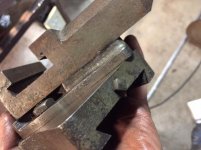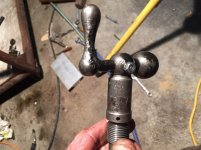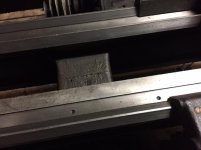Thank you Gary, now I see how that works.
Alan, all the way through, they are taper pins? That sure makes more sense, seems I found reference to two small ones, one from either side, when I was searching yesterday...must have been someone else dealing with "mods".
As for asking whether I need to take them off, I believe I do. The micrometer dial being used as a spacer, I don't imagine that it is the exact right length...I know, for the tumbler lever, as long as it's pin goes in the hole for that gear, snug, you're OK. But set up like this the pin just goes in; The micrometer dial stops it from reaching enough taper to snug up. I'm pretty sure that would be ok, I mean it's enough to hold the tumbler in place like it's supposed to. But, that's one more thing to rattle.
As for the Cross slide, the situation is even more grim. Without that micrometer dial my free play is about 3 full turns of the handle! Backlash has got to be in the 1/8" area. No good. I'm not too concerned about the aesthetics for now (that handle has obviously been welded back together..twice..), but operationally I would like to have everything at least as tightly toleranced as I can.
So the way I see it (and please tell me if you think otherwise), is that I **at least need to fix the cross slide**. This means I have to get the handle off. Then, I either need to make a spacer, buy a micrometer dial, or retrieve the original micrometer dial from the lever.
I haven't found any for sale (that aren't more beat up than my misused one), I can't make one without one being there, so...
Today in class, I decided to make a tensioner for the flat belt system. I made sure that it would work even with my extremely short belt (Yes, I'm going to get a longer one like I should have), as well as in the future when I do get a longer one. The only advantage of having the whole counter-pully homebrew thing so close to the machine for now, is that I can hang some sort of gear guards off of it. Kids, all teenagers, but there's no reason not to shield the gears.
Here's a few pics of the tensioner. Either spring, or counterweight, to keep it. What do you guys think? My welding instructor (who's actually a machine shop inspector as well), said to just give it enough force either way to keep the belt taught, as if you were only placing the weight of your arm across it.
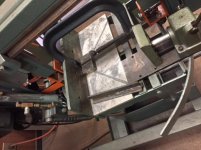
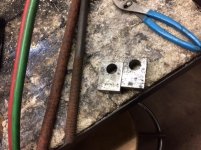

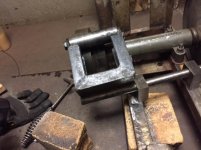

Loren
KB2WYL













